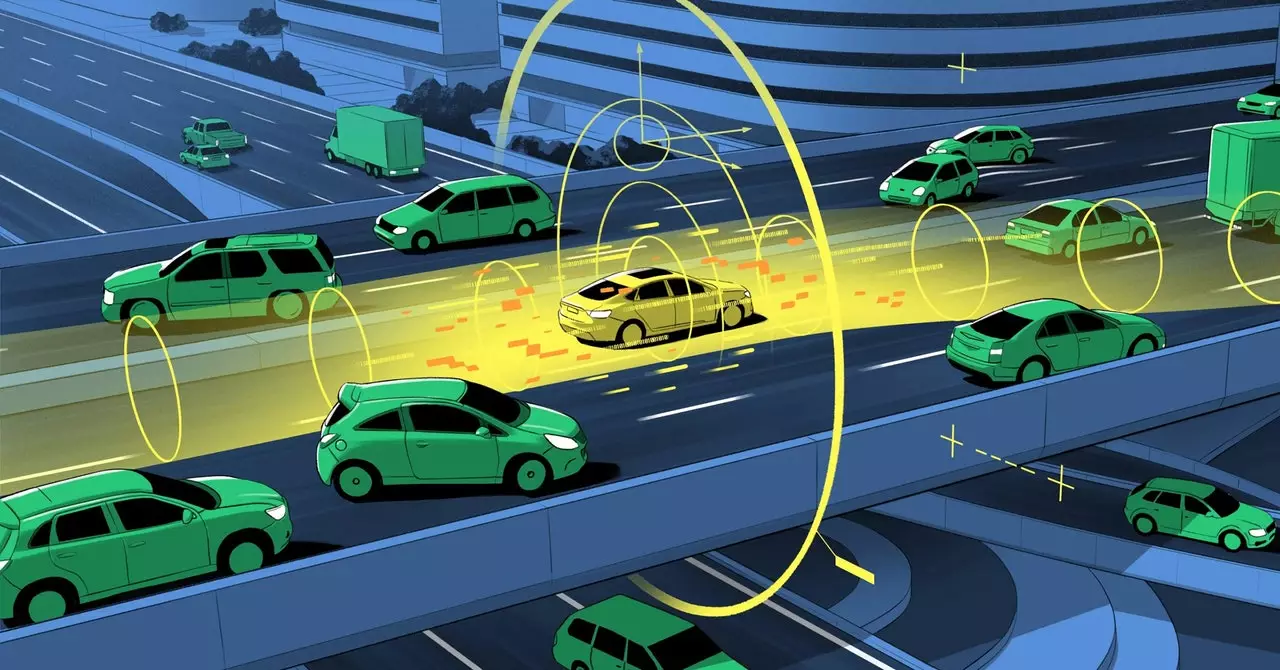The rise of autonomous vehicles, including driverless cars and drones, has brought immense possibilities for the future of transportation. However, concerns about safety persist, as evidenced by the numerous accidents and fatalities involving autonomous control systems. The traditional approach of exhaustive testing to ensure safety is often insufficient, as it may not uncover all potential flaws. In light of this, computer scientist Sayan Mitra and his team at the University of Illinois, Urbana-Champaign have developed a groundbreaking method to prove the safety of autonomous vehicles.
Mitra’s team focuses on providing end-to-end safety guarantees by addressing the reliability of the perception and control systems in autonomous vehicles. These systems are essential for informing the vehicle about its surroundings and making decisions based on the received data. The perception system utilizes machine-learning algorithms to analyze raw data from sensors and cameras, creating a simulated representation of the outside world. This information is then sent to the control module, which determines the appropriate actions for the vehicle. However, there is no guarantee that the perception results are entirely accurate.
To ensure the safety of autonomous vehicles, Mitra’s team introduced the concept of perception contracts. These contracts aim to quantify the uncertainties, or the “known unknowns,” in the perception system’s accuracy. The team assumed the existence of a perfect rendering of the vehicle’s surroundings and determined the amount of error introduced by the perception system. By defining an error band within which the vehicle’s perception system operates, the team proved that safety can be guaranteed.
Creating perception contracts is a complex task that involves considering various factors that contribute to uncertainties. The accuracy of the vehicle’s sensors, the presence of environmental factors such as fog or rain, and even the tolerance of drones to solar glare all play a role in determining the range of uncertainty. Mitra and his team acknowledge the challenge of accurately quantifying these uncertainties but stress the importance of keeping the vehicle within a specified range of uncertainty for guaranteed safety.
Mitra’s team’s groundbreaking work has already found practical applications. Their strategy for ensuring safety has been employed in helping drones land on aircraft carriers, and Boeing plans to test it on an experimental aircraft in the near future. This end-to-end safety guarantee provides reassurance for the widespread adoption and deployment of autonomous vehicles.
The development of autonomous vehicles holds immense potential for transforming the future of transportation. However, safety remains a crucial concern. Sayan Mitra and his team’s innovative approach to providing end-to-end safety guarantees through perception contracts addresses this concern. By quantifying uncertainties and ensuring the accuracy of the perception system, the team has taken a promising step forward in improving the safety of autonomous vehicles. Their work opens up new possibilities for the widespread adoption of this technology, paving the way for safer roads and skies in the future.


Leave a Reply